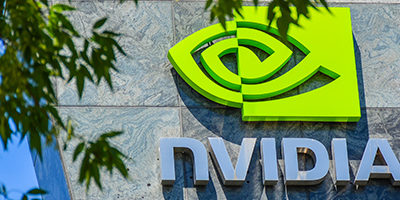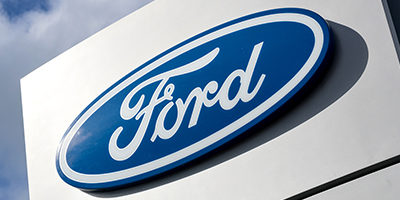%
Jubak’s Picks Performance 1997-2019
Jubak’s Picks
Buy and hold? Not really.
Short-term trading?
Not by a long shot.
So what is the stock-picking style of The Jubak’s Picks portfolio?
Click to expand...
Click to View the Jubak’s Picks Portfolio
I try to go with the market’s momentum when the trend is strong and the risk isn’t too high, and I go against the herd when the bulls have turned piggy and the bears have lost all perspective. What are the results of this moderately active — the holding period is 12 to 18 months — all-stock portfolio since inception in May 1997? A total return of 584% as of December 31, 2019. That compares to a total return on the S&P 500 stock index of 335% during the same period.
%
Top 50 Stocks Performance 2019
Top 50 Stocks
This long-term, buy-and-holdish portfolio was originally based on my 2008 book The Jubak Picks.
Trends that are strong enough, global enough, and long-lasting enough to surpass stock market averages.
Click to expand...
Click to view the Top 50 Stocks Portfolio
In The Jubak’s Picks Portfolio I identified ten trends that were strong enough, global enough, and long-lasting enough to give anyone who invested in them a good chance of beating the stock market averages.
To mark the publication of my new book on volatility, Juggling with Knives, and to bring the existing long-term picks portfolio into line with what I learned in writing that book and my best new ideas on how to invest for the long-term in a period of high volatility, I’m completely overhauling the existing Top 50 Picks portfolio.
You can buy Juggling with Knives at bit.ly/jugglingwithknives
%
Dividend Income Performance 2021
Dividend Income
Every income investor needs a healthy dose of dividend stocks.
Why bother?
Why not just concentrate on bonds or CDs?
Click to expand...
Click to view the Dividend Income Portfolio
Because all the different income-producing assets available to income investors have characteristics that make them suited to one market and not another. You need all of these types of assets if you’re going to generate maximum income with minimum risk as the market twists and turns.
For example: bonds are great when interest rates are falling. Buy early in that kind of market and you can just sit back and collect that initial high yield as well as the capital gains that are generated as the bonds appreciate in price with each drop in interest rates.
CDs, on the other hand, are a great way to lock in a yield with almost absolute safety when you’d like to avoid the risk of having to reinvest in an uncertain market or when interest rates are crashing.
Dividend stocks have one very special characteristic that sets them apart from bonds and CDs: companies raise dividends over time. Some companies raise them significantly from one quarter or year to the next. That makes a dividend-paying stock one of the best sources of income when interest rates start to rise.
Bonds will get killed in that environment because bond prices will fall so that yields on existing bonds keep pace with rising interest rates.
But because interest rates usually go up during periods when the economy is cooking, there’s a very good chance that the company you own will be seeing rising profits. And that it will raise its dividend payout to share some of that with shareholders.
With a dividend stock you’ve got a chance that the yield you’re collecting will keep up with rising market interest rates.
But wouldn’t ya know it?
Just when dividend investing is getting to be more important—becoming in my opinion the key stock market strategy for the current market environment—it’s also getting to be more difficult to execute with shifting tax rates and special dividends distorting the reported yield on many stocks.
I think there’s really only one real choice—investors have to pull up their socks and work even harder at their dividend investing strategy. That’s why I revamped the format of the Dividend Income portfolio that I’ve been running since October 2009. The changes aren’t to the basic strategy. That’s worked well, I think, and I’ll give you some numbers later on so you can judge for yourself. No, the changes are designed to do two things: First, to let you and me track the performance of the portfolio more comprehensively and more easily compare it to the performance turned in by other strategies, and second, to generate a bigger and more frequent roster of dividend picks so that readers, especially readers who suddenly have a need to put more money to work in a dividend strategy, have more dividend choices to work with.
Why is dividend investing so important in this environment? I’ve laid out the reasons elsewhere but let me recapitulate here. Volatility will create repeated opportunities to capture yields of 5%–the “new normal” and “paranormal” target rate of return–or more as stock prices fall in the latest panic. By using that 5% dividend yield as a target for buys (and sells) dividend investors will avoid the worst of buying high (yields won’t justify the buy) and selling low (yields will argue that this is a time to buy.) And unlike bond payouts, which are fixed by coupon, stock dividends can rise with time, giving investors some protection against inflation.
The challenge in dividend investing during this period is using dividend yield as a guide to buying and selling without becoming totally and exclusively focused on yield. What continues to matter most is total return. A 5% yield can get wiped out very easily by a relatively small drop in share price.
Going forward, I will continue to report on the cash thrown off by the portfolio—since I recognize that many investors are looking for ways to increase their current cash incomes. But I’m also going to report the total return on the portfolio—so you can compare this performance to other alternatives—and I’m going to assume that an investor will reinvest the cash from these dividend stocks back into other dividend stocks. That will give the portfolio—and investors who follow it—the advantage of compounding over time, one of the biggest strengths in any dividend income strategy.
What are some of the numbers on this portfolio? $29,477 in dividends received from October 2009 through December 31, 2013. On the original $100,000 investment in October 2009 that comes to a 29.5% payout on that initial investment over a period of 39 months. That’s a compound annual growth rate of 8.27%.
And since we care about total return, how about capital gains or losses from the portfolio? The total equity price value of the portfolio came to $119,958 on December 31, 2012. That’s a gain of $19,958 over 39 months on that initial $100,000 investment or a compound annual growth rate of 5.76%.
The total return on the portfolio for that period comes to $49,435 or a compound annual growth rate of 13.2%.
How does that compare to the total return on the Standard & Poor’s 500 Stock Index for that 39-month period? In that period $100,000 invested in the S&P 500 would have grown to $141,468 with price appreciation and dividends included.) That’s a total compounded annual rate of return of 11.26%.
That’s an annual 2 percentage point advantage to my Dividend Income portfolio. That’s significant, I’d argue, in the context of a low risk strategy.
Portfolio Related Posts
Apple is Pick #5 for my Special Report: It’s a Market Melt Up!! on my subscription JubakAM.com site (and for my Jubak Picks and Volatility portfolios)
It was sure hard to see a market melt up today, November 22. The Standard & Poor’s 500 was down 0.32% and the NASDAQ Composite fell 1.26%. Market leaders in the melt up rally like Applied Materials (AMAT) and Microsoft (MSFT) were down 1.65% and 0.96%, respectively. And it was even harder to see the trend I thought might be on its way in my Friday, November 19 post “Forward into the past with tech stocks:We’re seen this market before.” The rotation into tech stocks that I saw on Friday turned into loses of 3.12% for Nvidia (NVDA), and 1.92% for Alphabet (GOOG.)
But I suggest that you take a look at Apple’s (AAPL) performance today
Selling remaining Treasury ETFs out of my portfolios
On what looks like solid odds for interest rate increases in 2022, I'm selling my remaining Treasury ETFs out of my portfolios. (Treasuries drop in price as interest rate and yields climb.) I'm selling the Vanguard Short-Term Treasury ETF (VGSH) out of my Jubak Picks...
Apple is Pick #5 for my Special Report: It’s a Market Melt Up!! on JubakAM.Com. (And for my Jubak Picks and Volatility portfolios tomorrow)
It was sure hard to see a market melt up today, November 22. The Standard & Poor’s 500 was down 0.32% and the NASDAQ Composite fell 1.26%. Market leaders in the melt up rally like Applied Materials (AMAT) and Microsoft (MSFT) were down 1.65% and 0.96%, respectively. And it was even harder to see the trend I thought might be on its way in my Friday, November 19 post “Forward into the past with tech stocks:We’re seen this market before.” The rotation into tech stocks that I saw on Friday turned into loses of 3.12% for Nvidia (NVDA), and 1.92% for Alphabet (GOOG.) But I suggest that you take a look at Apple’s (AAPL) performance today
Nvidia beats: Does this set the stage for the next leg up in stocks?
On Saturday I posted–on my subscription JubakAM.Com site, that Nvidia’s (NVDA) earnings report on November 17–that is today–and the market reaction to the company’s quarterly earnings report would tell us a lot about market sentiment and the magnitude of any year-end, market melt up rally.
Wall Street analysts were projecting that the company would announced earnings of 95 cents a share for the quarter that ended in October. That would be a huge 58% increase from the 60 cents a share reported for the October 2020 quarter, I
But, I worried, that much of that number was already in the share price. The stock was up 47% in the last month and 133% for the year to the November 15 close. Would the stock drop if all the company did was meet expectations?
Buying Generac Holdings on the dip and on “not enough” global climate conference results
I wouldn’t call the Glasgow Global Climate Summit, which wraps up on November 12, a failure. The pledge to reduce methane emissions is an important step forward: Methane is an extremely powerful global warming gas. And the promise of a big step up in global reforestation is also a solid contribution to the fight to keep the earth habitable for human beings. But I think it is safe to say that the progress out of the conference isn’t enough. Which is why I’m adding shares of General Holdings (GNRC) to my Jubak Picks Portfolio on Monday, November 8.
My picks for infrastructure stocks after Congress finally acts
Expect a scramble this week as Wall Street tries to identify the winners from the $1.2 trillion ($550 billion in new money) infrastructure bill passed by the House of Representatives (finally) late on Friday night. President Joe Biden will sign the bill, which passed the Senate in August, early in the coming week. Frankly, the bill has been so long in the baking that I had forgotten what was in it. So I looked it up. (And I’ve suggested some potential stock market winners from this new spending.)
Ford raises 2121 earnings forecast and reinstates dividend
So far Ford Motor (F) is meeting the expectations I had when I added it to the Jubak Picks Portfolio on June 9, 2021. On Wednesday, October 27, the company raised its earnings forecast (EBITDA) for 2121 to $10.5 billion to $11.5 billion on an improved supply of chips, and strong demand for its cars, especially for the electric versions of its Mustang and F150 pickup. The company also reinstated a quarterly dividend–at 10 cents a share–payable on December 1.
Selling Ericsson out of my Jubak Picks Portfolio
I bought Ericsson (ERIC) back on August 5, 2020 because of the growth it would see, I thought, from the roll out of the next generation–5G–of wireless systems. The problem for the company–and the stock–is that it has been hit hard the global battle between China (which has championed its own equipment vendors) and Sweden and other Western governments that worry that Chinese equipment suppliers such as Huawei with their close ties to the Chinese government and its military pose a security threat to their telecom networks.










